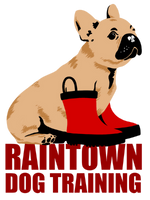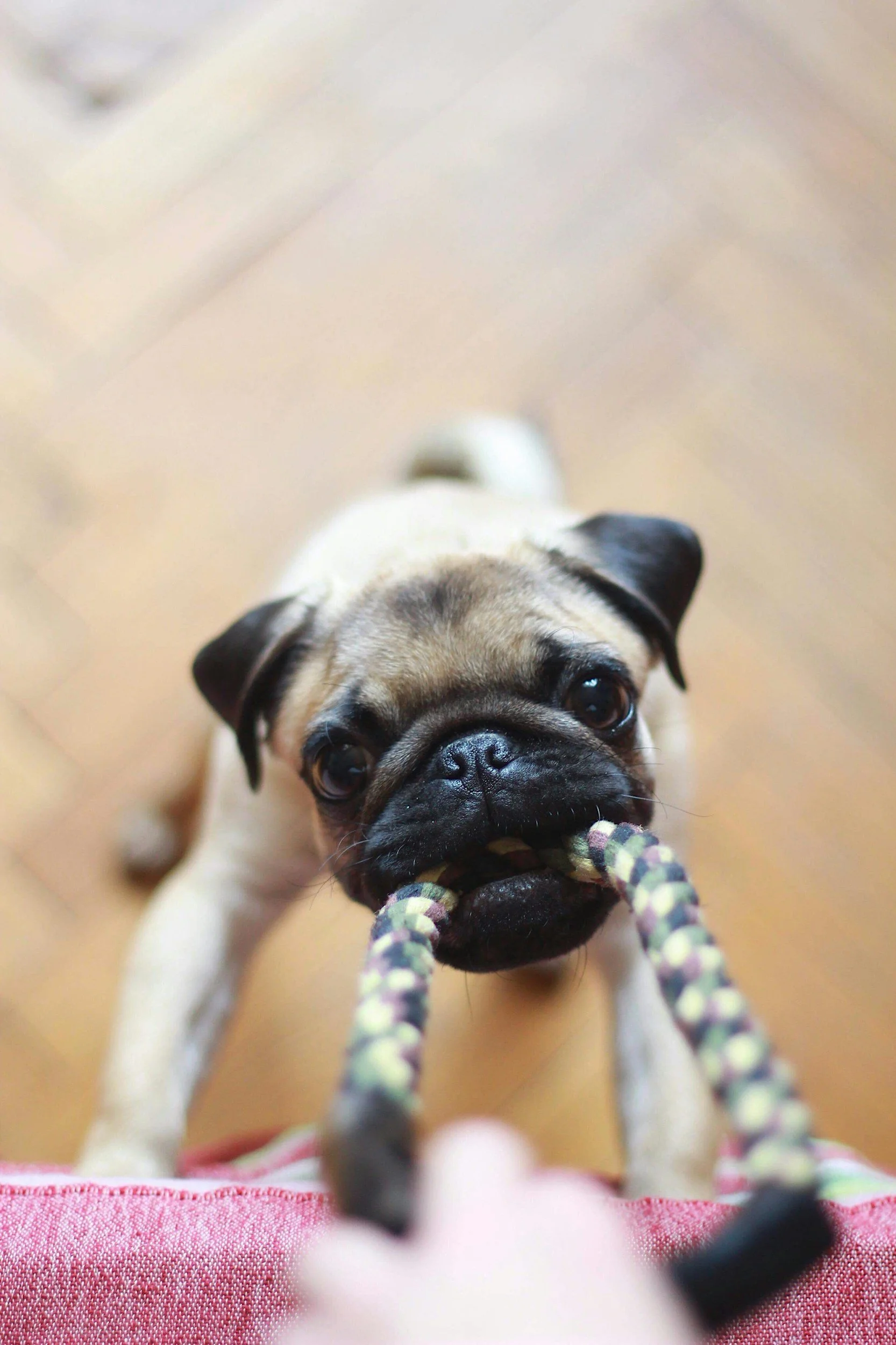Dog Play: Developing Keen Tuggers
Kris Hampton, CTC, CPDT-KA
At Raintown, we love a good game of tug-of-war with our dogs! Whilst there is no evidence that playing tug increases aggression in dogs, having some tug rules in place is a wise idea, especially if there are children around your pup. Read on for our tips to develop a safe and keen tugger in your furry companion!
Tip 1: Prioritize rules
Kids will imitate if they see a grown-up playing tug, and a combination of intensity and kids isn't great for dogs. So make sure that you firmly install the following tug rules with your pup:
1) Start & Stop Cues: dog only grabs when invited ('get it!'), and lets go on cue (‘drop!’).
2) Accuracy: no sloppy mouth! Your dog must never put their teeth on humans (if teeth make contact, it’s immediately game over for the moment!).
3) Breaks: lots of breaks are important to practice obedience and test the system, as well as to keep the intensity manageable.
Tip 2: Handler Pre-Requisites
In order to teach and play tug, you must be able to:
Simulate struggling prey: wiggle the toy, make it ‘live’ when cue-ing ‘get it!’
Make toy dead/boring: the toy must go limp when handler says ‘drop!’
Reward: treat when your dog drops the toy on cue, then give the toy back.
Avoid rude retakes: if your dog grabs the toy uninvited or puts teeth on your skin, introduce infractions (‘too bad! End of the game!’).
Thought of the month:
Final Tug Pointers
Experiment with Toy Types
Try different types of toys, such as those with handles, chew toys, and balls with ends, to find what engages your dog best.
Anchor Yourself with Strong Dogs
Ensure proper stance and control when working with strong dogs; consider using a chair for additional stability if needed.
Careful with Small Kids Imitating
Always supervise interactions between small children and dogs; stick to safe activities like fetch, especially with large, strong dogs.
Easier to Teach Puppies Than Adults
Puppies are generally more receptive to learning compared to adult dogs, making them easier to train in terms of building keenness and installing rules.
You Control the Big Payoff
You have the power to influence the dog’s experience by how you imitate the struggling, live prey with tug toys. Have fun!



